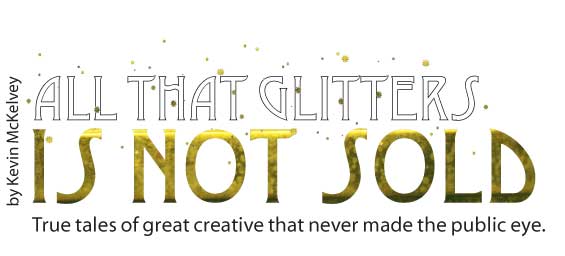
After weeks and months of brain searing, marriage wrecking work, our best and brightest ideas are often killed before the public ever gets a chance to bask in their brilliance. Why does it happen? Why does good work die before its time? To solve this eternal riddle, we look to the noble loggerhead turtle, and some of the best creative minds in the business, for answers.
The loggerhead turtle, so called for its unusually large head, takes about 20 years to become reproductively mature, about the same amount of time it takes for a baby creative to produce his first work. The lucky ones mate about once a year, usually at night, though how it's actually accomplished remains unclear. And every summer, as the sun sets on the hot white beaches of the Southeastern coast, thousands of loggerheads lumber and scratch their way onto the sand to lay eggs. After patiently depositing her precious cargo (more that 100 eggs in all), the female loggerhead carefully covers them with warm, wet sand and returns to the sea, leaving them to their fate.
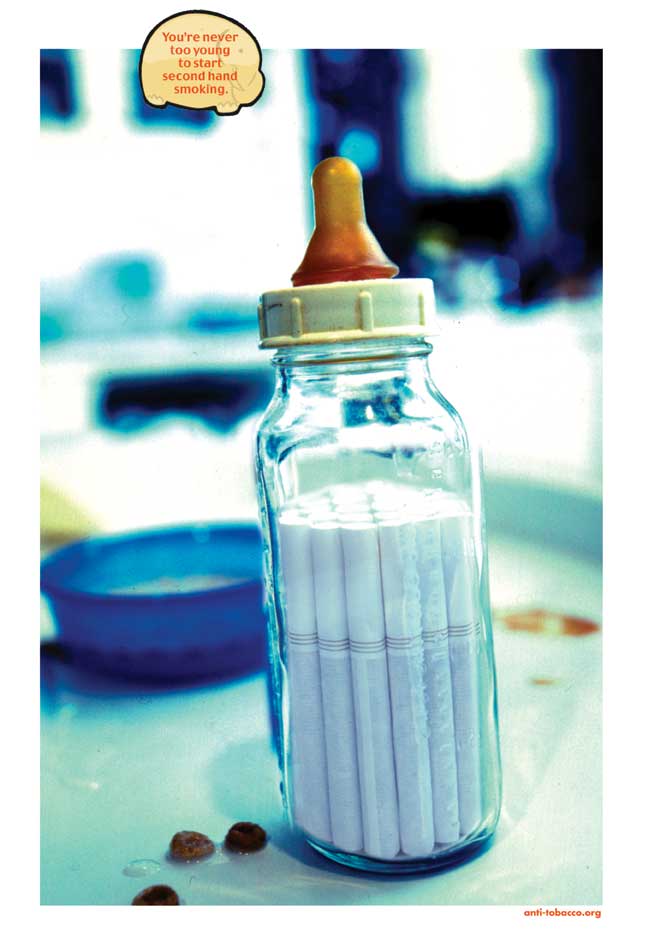
Many will never hatch, devoured by nighttime marauders or crushed by unthinking passersby with little regard for the miracle taking place beneath their feet. Others will be plucked just inches from freedom by sharp beaked predators looking for an easy meal. And even for those tiny few that make it to water, the chances remain grim. Only one in a thousand will survive.
"There are a billion different reasons why good work dies," according to Luke Sullivan, Chief Creative Officer of WestWayne. "That's like asking the guy at the front desk of the hospital, 'What do people die of most here?' Bad toe infections, brain tumors, cancer, overdoses, car accidents, every possible injury you can imagine kills ads." Sullivan, one of the most awarded and respected writers in advertising, devoted an entire chapter of his book, "Hey Whipple, Squeeze This," to good work that died before its time. But Sullivan is quick to point out that clients kill good work for good reasons, as well as bad. The best, and most difficult to argue against, is that the creative is "good," but off strategy.
Most creatives understand the concept of death by missed strategy. It's the other, more subjective, causes of creative death that are so hard to explain and accept. Fear, for example. It can abort the creative process just when it starts to get interesting. "Most of the time, good work gets killed because it's just too scary," says BA Albert, Principal and Creative Director of MATCH, Inc. "Especially these days, people have to have guts to go out on a limb creatively, because they don't know when that limb will be cut off."
Bad economic times can also be bad news for good creative. Terry Sagedy, now a Vice President at Point B, was forced to close his own shop, Ivory Communications, shortly after the dotcom bubble burst in 2000. "In the last 18 months, since the unraveling began, directors of marketing are looking at things differently. They might not be able to afford the better creative because of costs. Or they may not be willing to risk their job to say, 'This is the way to go,' when they can take the safe, inexpensive route and look like a hero."
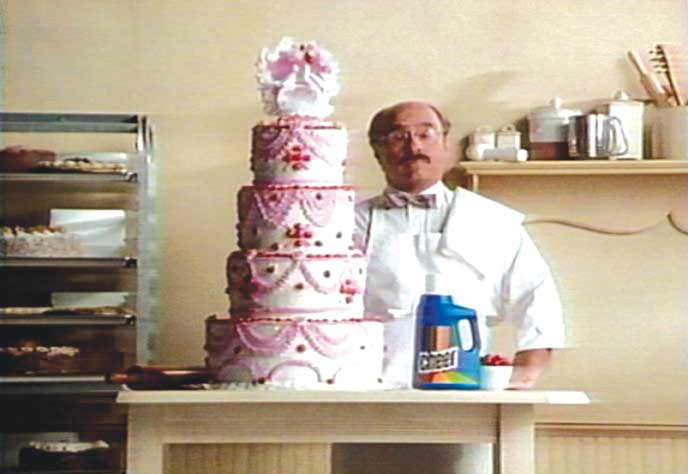
Poisonous politics is another ugly fact of nature in advertising. Understanding how that poison works to kill a good ad can be more challenging than creating it the first place. Bill Pauls, Executive Creative Director at BBDO Atlanta, is a veteran who has plenty of war stories to tell. "On at least two occasions, we've done advertising for the government that they said was, 'just too good,'" he says. "Basically, they asked us to dumb it down a little, to take the edge off. They were more concerned about being noticed than about not being noticed."
As absurd as it sounds, having your work killed because it's "too creative" is not that unusual. As an entry level copywriter working in Atlanta, Jennifer LeMay, renowned for her live-demo Cheer detergent commercials created at Leo Burnett, wrote an ad touting an upcoming bank "merger". The ad was supposed to put a positive spin on the takeover. LeMay's headline read: "We're Not Ashamed to Admit We're Marrying for Money." She's kept the client service report from that presentation for nearly 20 years. It reads: "The Client rejects the concept, as it too accurately reflects the actual situation."
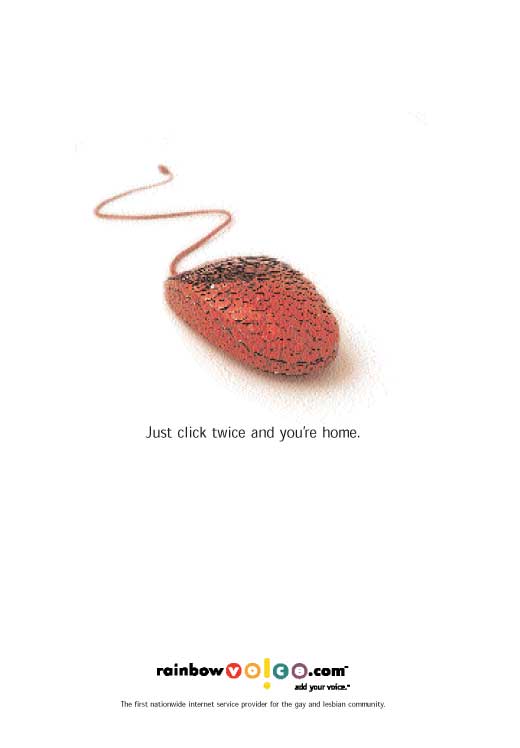
What is a creative to say when confronted with that kind of mind boggling logic? Sometimes, you can't say anything, literally. After 68 meetings over a TV spot that was not really worth airing after the client's input, Luke Sullivan and his ill fated storyboard reached the top floor of a company where he was finally given approval by the CEO. It had taken nearly a year, but the nightmare was over. Almost.
The following day, Sullivan was forced to pitch the board one more time, deep in the bowels of an anonymous office park somewhere beyond Atlanta's Perimeter. There, a middle aged woman wearing thick, horn rimmed glasses, pulled a little green rubber frog from her purse, raised its hands up to its ears as if to protect them, and said: "Mr. Froggy doesn't like what he's hearing." Sullivan, momentarily dumbstruck, claims to have blacked out. He also swears he has witnesses.
Strategic gaffs. Fear. Politics. Cost-cutting. Bad taste. And occa sionally, outright insanity. With so many reasons from which to choose, it's nearly impossible to say why good work gets killed. It might be smarter to ask why the few great ads that do survive make it all. The simple answer may be that, unlike the endangered loggerhead, creative people never leave their best ideas buried in the sand. They fight for them.
BBDO/ANTI-SMOKING (top right picture)
Often, an agency's best work goes unseen because the agency loses in the final pitch. This campaign, created at BBDO Atlanta by Kyle Lewis and Jeff Nixon for the Georgia Anti-Smoking pitch, was delivered a mortal blow when the account went to Austin Kelley Advertising. But Executive Creative Director Bill Pauls refused to let it die. They found another anti-smoking group who agreed to run the work. Ironically, the group is headed by a member of the R.J. Reynolds family.
HELLO CREATIVE/RAINBOWVOICE.COM (upper right)
The right economic conditions are just as vital to the survival of good creative as a bankable check. This campaign, created by Kevin McKelvey and Michael Howell under their Hello Creative banner, was produced for an upstart ISP called Rainbowvoice.com, which catered to the gay and lesbian community. In lieu of cash, the creative team gleefully accepted stock options as payment. Those options died alongside the campaign in the implosion of the dotcom bubble.
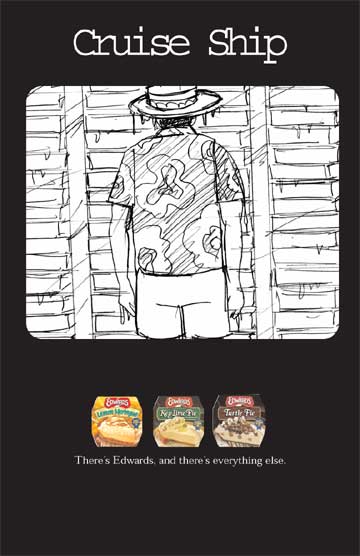
MATCH/EDWARDS SPOT (right)
Good timing is everything, especially with work that is already pushing the client's envelope. MATCH created this spot for Edwards Frozen Pies. The client loved it and gave it the green light. The director was lined up, the cruise ship was rented and tickets were booked to Los Angeles. It was the first week of September 2001. Unfortunately, after September 11, body bags were no longer very funny. The spot remains just a storyboard.
The spot opens on stock footage of a cruise ship in the middle of the ocean. We dissolve and we’re inside the cruise ship (below deck). We’re watching two uniformed crew members struggle to carry a giant duffel bag into the ship’s freezer.
CREW #1: (Strained) So… do we just leave him in here?
CREW #2: We're three days out at sea, what do you think we’re gonna do with him?
CREW#1: (Shakes his head) What a way to go.
They set down the bag and leave, slamming the big freezer door behind them. Suddenly we hear laughter from the duffel bag. It starts to unzip and a man emerges (Tom Arnold type) he looks around and spies hundreds of Edwards Frozen Desserts in every flavor.
MAN: Jackpot!
Cut to shot of product packages:
ANNCR: When it comes to unique flavors, there's Edwards and there's everything else.